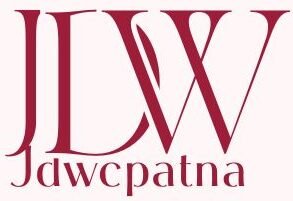Buffalo nickels, also known as Indian Head nickels, were minted by the United States Mint from 1913 to 1938. The only truly distinctive design featuring a Native American chief and the American bison has made buffalo nickels considerably in increasing demand among numismatists.
The price for a buffalo nickel depends on the following factors
The coin’s rarity and minting flaws, among many others. Within this article, we will show you the top five most valuable Buffalo nickels: ranked from smallest to largest, in depth discussions of each coin and why they cost so much.
1924-S Buffalo nickel
Notable for its low mintage of approximately 1.4 million coins. Despite its relatively higher mintage compared to other rare Buffalo nickels, its value is significantly enhanced when found in high-grade conditions.

Coins graded at MS-66+ have sold for around $105,750 in auction. The value of the coin is mainly based on the low mintage and the fact that few good specimens exist.
1937-D Three-Legged Buffalo Nickel
The 1937-D Three-Legged Buffalo nickel is an error coin with a buffalo having only three legs since a die polishing error resulted in this. This makes it one of the highly sought-after pieces among collectors.
Coins graded MS-67 have been sold for around $99,875. The value is so high because of the rarity of this error and a few surviving specimens.
1918/7-D Overdate Buffalo Nickel
The 1918/7-D overdate Buffalo nickel is characterized by a numerical error in which the ‘8’ was punched over a ‘7’ resulting in a flat-topped ‘8’. This is one of the rarest overdate errors to be found at the Denver Mint, making it highly priceless to collectors.

The MS-65 coins have been sold for about $350,750. The historical value and the overdate error are significant reasons for such a monetary value.
1916 Doubled Die Obverse Buffalo Nickel
The 1916 Doubled Die Obverse Buffalo nickel contains a doubling effect on the date and the term ‘Liberty’ on the obverse since the dies failed to align at the time of striking. It is an extremely rare and coveted coin.
For high-grade coins, the minimum price fetched through auction is $281,750. The old age and error in the doubling make it so desirable for any collector.
1926-S Buffalo Nickel
The 1926-S Buffalo nickel is the rarest of all Buffalo nickels, with only 970,000 coins mintage. Scarcity alone, combined with the coin’s age and historical significance, gives it a highly valuable status.
Coins graded in MS-66 have sold for as much as $322,000. Its low mintage and excellent preservation are the factors that make the coin highly valued in the market.
Top 5 Most Valuable Buffalo Nickels
| Rank | Coin Type | Mintage | Notable Features | Approximate Value |
|---|---|---|---|---|
| 1 | 1924-S Buffalo Nickel | 1,437,000 | Low mintage, high-grade specimens rare | $105,750 |
| 2 | 1937-D Three-Legged Nickel | Limited | Die polishing error, missing front leg | $99,875 |
| 3 | 1918/7-D Overdate Nickel | Limited | Overdate error, ‘8’ struck over ‘7’ | $350,750 |
| 4 | 1916 Doubled Die Obverse Nickel | Limited | Doubling of date and ‘Liberty’ | $281,750 |
| 5 | 1926-S Buffalo Nickel | 970,000 | Rarest Buffalo nickel, low mintage | $322,000 |
Understanding the factors that contribute to the value of Buffalo nickels can enhance your appreciation of these historical coins and guide you in identifying valuable specimens.
FAQS:
What makes a Buffalo nickel valuable?
The value of a Buffalo nickel is determined by factors such as rarity, minting errors, and the coin’s condition. Coins with low mintage numbers, unique errors, and high-grade preservation are particularly valuable.
How can I identify a 1937-D Three-Legged Buffalo nickel?
This coin features a buffalo with only three legs due to a die polishing error. The missing front leg and the ‘moth-eaten’ appearance of the back leg are distinctive features.
What is an overdate error in Buffalo nickels?
An overdate error occurs when a coin is struck with a die that has an earlier date beneath the intended one. For example, the 1918/7-D Overdate Buffalo nickel has a ‘7’ struck beneath the ‘8’, resulting in a flat-topped ‘8’.

